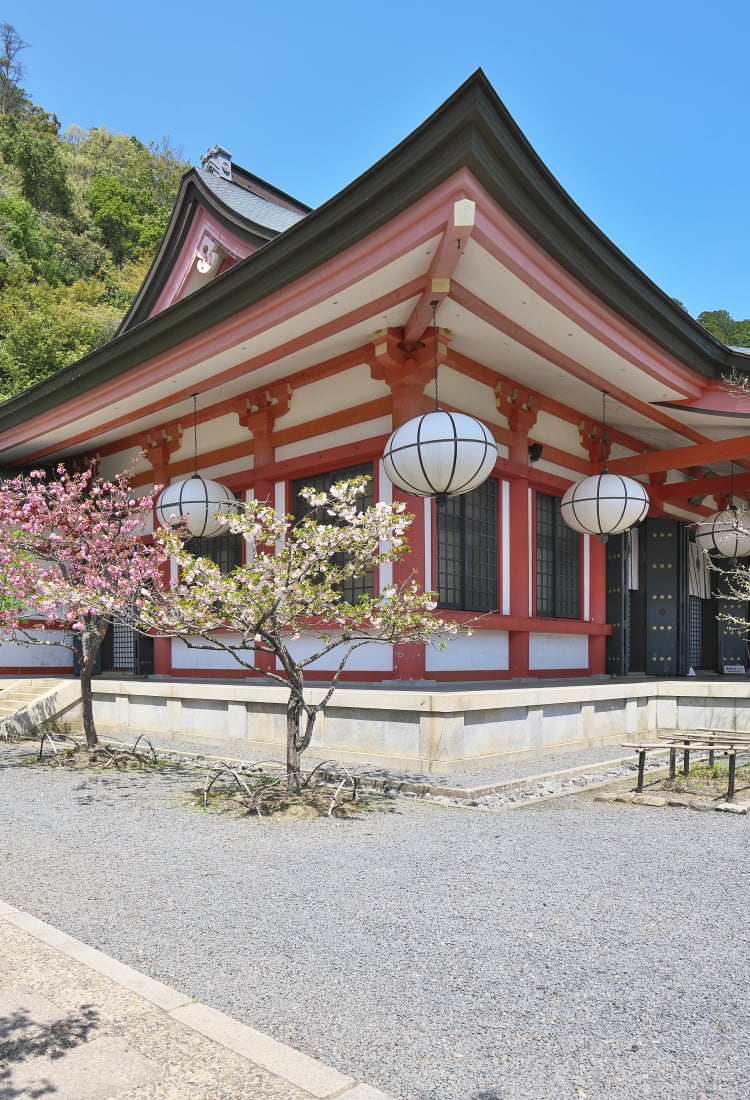

KYOTO Kurama & Kifune The birthplace of reiki—watched over by protectors of the natural world
The birthplace of reiki—watched over by protectors of the natural world
Mt. Kurama is easily one of the best day trips outside of downtown Kyoto. Temples with mysterious origins, a mystical history, lush cedar forests, and an easy day hike are all at your fingertips.
Don't Miss
- The mountain dwelling Kuramadera Temple
- Up and over the mountain on the Kurama-Kibune hike
How to Get There
The Kurama area is accessible by train and bus from Kyoto Station.
Take the Kyoto Municipal Karasuma Line to Kokusai Kaikan, and from the Kokusai Kaikan-mae bus stop take the Kyoto Bus No. 52 bound for Kurama Onsen. Get off at Kurama.
A mystical land
Mt. Kurama is known for being the birthplace of reiki, a holistic healing art started in the early 1900s and still practiced widely today. Mt. Kurama has a history steeped in mystical beliefs.
Protected by tengu
It is believed that tengu, mythical creatures from Japanese folklore, still haunt the area. Once believed to be evil, they are now seen as protectors of the natural world. Thought to be both kami and yokai—divine spirit and ghost—tengu are depicted with both human and bird-like characteristics.
Outside of Kurama station you will be greeted by an enormous statue of Sojobo, king of the Tengu, said to have originated in Kurama.

The esoteric history of Kuramadera Temple
Kuramadera is the main temple of the area, sprawling down one side of Mt. Kurama.
The temple was founded in the eighth century, but its origins are mysterious. It is said that a monk traveled to Kurama after learning of its mystical powers in a dream. He built Kuramadera to harness the unique spiritual power of the area. Although it was controlled by various Buddhist sects throughout the ages, it is dedicated to esoteric beliefs and mountain worship today.
Hike or ride up to a grand view
You can pay 200 yen to take a short cable car up the mountain to reach the main building. If you'd like a more intimate look at the complex, you can hike up the mountain path.
At the top, the mountain is elevated, and buildings stand in a vast courtyard. The view of the mountains and valleys beyond is amazing.
The Kurama-Kibune hike
Past the main hall, a trail continues up and over the mountain to Kibune on the opposite side of the mountain. The hike is lovely, and leads to a few smaller temples that are part of Kuramadera .
Exposed roots
Halfway through the hike, you'll encounter a special grove of trees. Their roots are unable to penetrate the hard ground and have woven together in a mesmerizing pattern.
A satisfying journey
If you include the walk from the base of the temple, the hike to Kibune is 3.9 km and takes about two to three hours. It's not too difficult, and includes wooden steps and handrails in more difficult areas both ascending and descending the mountain. Come in August, when it's not as hot as the city, or autumn, when the trees are at their best.

Kifune-jinja Shrine and Kibune
Once in Kibune, you should continue your mountain pilgrimage and visit Kifune-jinja . It's hard to miss the entrance to Kifune-jinja: a long stone staircase lined with red lanterns. The sight is absolutely stunning in any season.
The shrine is dedicated to the god of water and features a special omikuji (fortune) that can be floated on the water. At first it appears blank, but once placed on the water of the shrine's fountain, your fortune magically appears.
Dine on kawadoko
Kibune is a fantastic area and worth a closer look. Local Kyoto people would come to Kibune to escape the heat of the city. It's known for the kawadoko, or decks, that are built over the Kibune river, and are a natural form of air-conditioning. During the summer, you can enjoy a traditional Japanese meal atop a kawadoko, a truly unique experience.

The Kurama area offers many more attractive places and events. Day trips are possible from downtown Kyoto, but an overnight stay may be a good option for hikers.






























































